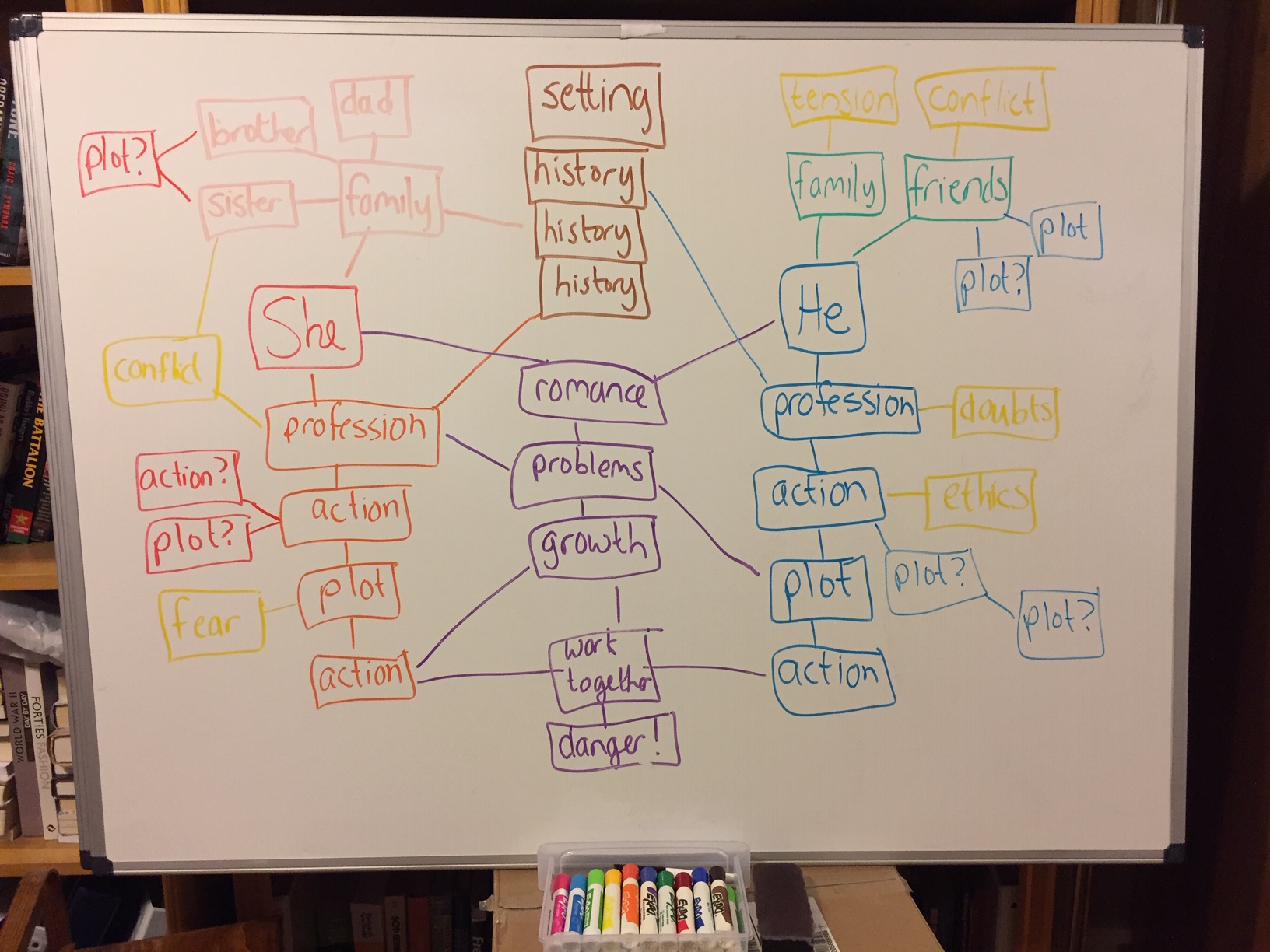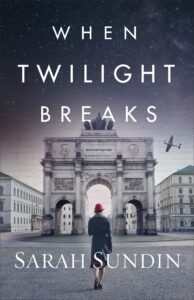Sarah Sundin, @sarahsundin
Confession: ideas don’t come easily to me.
When I chat with authors who have ideas coming faster than they could ever write them, I feel a twinge of jealousy, which quickly goes away. God gives me exactly one idea a year to keep me humble, so that I’ll remember the source of the gift. That’s how we work together.
But every three years when it’s time for me to work on a new three-book proposal, I get a bit nervous. Will I receive three new ideas—or not?
This time around, I had nothin.’ A month ago, I Zoomed with my agent and editor, and my ideas were vague. “There’s this woman…? And she’s looking for her child…? England maybe…?”
Woo hoo.
So after some hashing out with my editor and agent, I got to work. In the past, I’ve had solid concepts and characters and plots to play with by this time, so writing the synopses mostly required doing background research (I write historicals set during World War II) and filling in plot holes.
This time I had more hole than plot. I needed something different. After I did my background research, I pulled out my new toy.
While walking the dog recently, I saw two big white boards propped against a tree with a sign above saying, “Free!” Two. BIG. White boards. Still-in-their-packaging new! Free!
I finished the walk, because the dog has a serious agenda involving bushes and squirrels and not involving white boards. Then I jumped in my car and slid those beauties into the back.
Now it was time to play.
I propped up the white boards on boxes, pulled out the multi-colored dry erase markers I’ve accumulated from my years teaching Sunday school and Bible study, and got to work.

I wrote “He” on one side and “She” on the other—my poor characters didn’t even have names. In the middle I scribbled some historical tidbits that popped up during research that might be interesting in a story. Then I started drawing ideas with circles and arrows. I used different colors for family ideas, for action ideas, for the romance, for emotions, and for ethical dilemmas.
The beauty of the white board was that I could erase ideas or scoot them elsewhere. When I was done with the first book, I took a photo of the white board, erased, and started again for book two.
While noting the symmetry between the hero and the heroine’s ethical dilemmas in yellow on the white board, I found myself saying, “What if…?” And the main action plotline for the hero snapped into place.
Within a matter of days I had three full synopses.
Am I advocating white boards as THE only solution? Absolutely not.
What worked was play. Play strips away anxiety, and anxiety hinders creativity.
By mixing things up and trying something new, I ditched my internal worrywart. She was lost, driving in circles, trying to find that freeway on-ramp. Her GPS is still saying, “Recalculating…recalculating…”
So how can you mix things up? How can you play with ideas and ditch your internal worrywart?
Post-its, multi-colored scrap paper, index cards? Trello, Scrivener, or Pinterest boards? A roll of butcher paper? A spreadsheet (don’t knock it!)? Brainstorming with writing buddies? With non-writer friends? With random strangers in line at the grocery (probably not…)?
What ways have you found to play with your writing?
Munich, 1938. Evelyn Brand is an American foreign correspondent determined to prove her worth in a male-dominated profession and to expose the growing tyranny in Nazi Germany. To do so, she must walk a thin line. If she offends the government, she could be expelled from the country—or worse. If she does not report truthfully, she’ll betray the oppressed and fail to wake up the folks back home.
Peter Lang is an American graduate student working on his PhD in German. Disillusioned with the chaos in the world due to the Great Depression, he is impressed with the prosperity and order of German society. But when the brutality of the regime hits close, he discovers a far better way to use his contacts within the Nazi party—to feed information to the shrewd reporter he can’t get off his mind.
As the world marches relentlessly toward war, Evelyn and Peter are on a collision course with destiny.
Sarah Sundin is an ECPA- and CBA-bestselling author of World War II novels, including When Twilight Breaks. Her novel The Land Beneath Us was a 2020 Christy Award finalist, The Sky Above Us won the 2020 Carol Award, The Sea Before Us received the 2019 Readers Choice Award from Faith, Hope, and Love, and When Tides Turn and Through Waters Deep were named to Booklist’s “101 Best Romance Novels of the Last 10 Years.”
A mother of three adult children, Sarah lives in northern California and enjoys speaking for church, community, and writers’ groups. She serves as Co-Director for the West Coast Christian Writers Conference. You can find her at http://www.sarahsundin.com



Comments 2
I honestly have a love-hate relationship with whiteboards. I love the idea because I like the idea of free-form idea spewing. I hate seeing my nonsensical musings. I hate being exposed to anyone who happens by my whiteboard.
I used to be a web designer in a former employee, and they insisted on wireframing out websites on huge whiteboards. The other designers all had degrees in art, and knew how to draw straight lines better than anyone I’ve seen. My straight lines tend to look like ovals. I can’t draw. That’s why I use computers.
However, I’ve picked up a few smaller whiteboards. I’ve used those doing home church during the pandemic. I’ve used them to sketch out fast ideas, or make lists.
I do, however, use a free tool called Draw.io. I basically can drop boxes on a screen, move them, connect them. Not quite as free-flowy as a whiteboard, but it’s smaller, hideable when someone waltzes in my office, and I can save and edit my “boards”.
In the future, if I ever manage by the grace of God to have a studio, I may pick up some larger whiteboards. But my anxiety when facing those behemoth mockers will keep that away. For now.
Love this post! (even better that I could read it instead of listening. 🙂 I tried a whiteboard for novel planning–once. I needed a bigger board except then I would erase part of my words while trying to reach to write more. That project ended up on large sheets of packing paper, I think. Current project(s) are in Word “tables”/charts. Not great for brainstorming, but at least I have the basic plot in one place. My brain could use a few free-flowing webs one of these days.